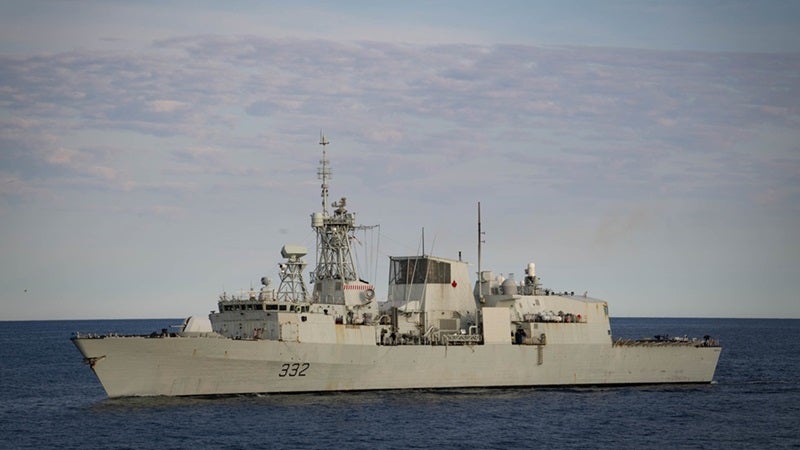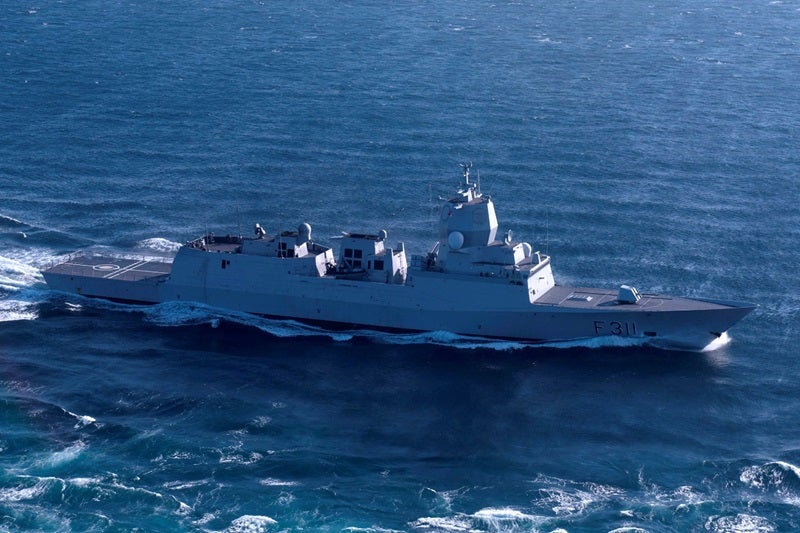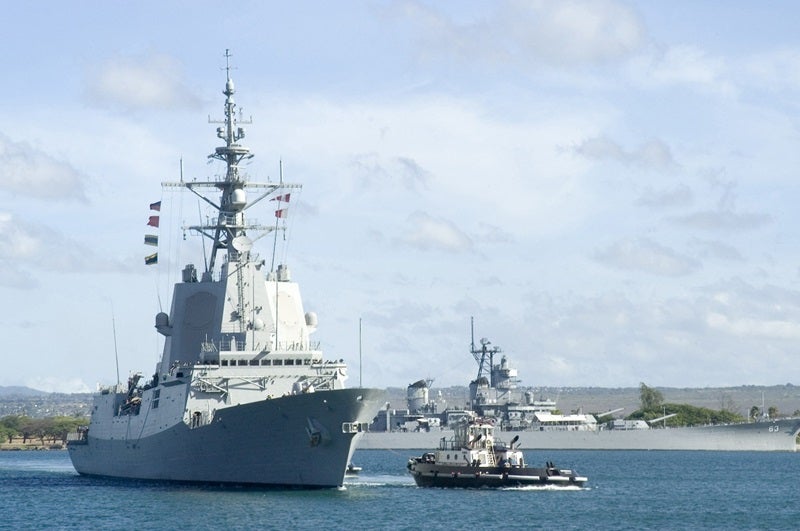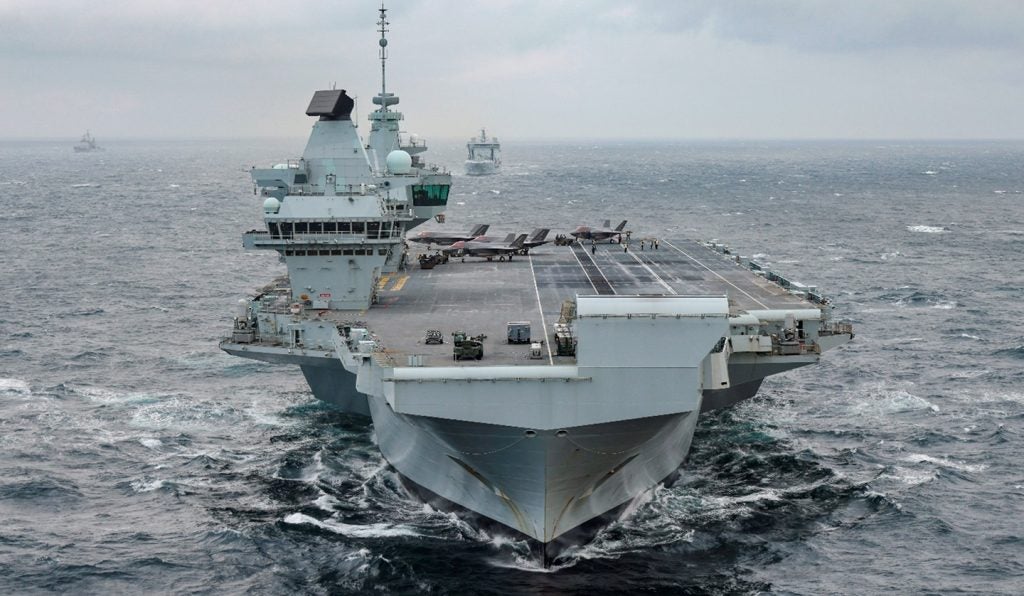Some 4,000 British personnel preparing to deploy a Carrier Strike Group (CSG) around the world, led by the flagship carrier HMS Prince of Wales, will also be joined by certain naval assets from partner nations throughout the voyage.
Frigates and auxiliary vessels from Canada, Norway and Spain will reinforce the size and effect of the deployment, known as Operation High Mast.
Together, the group will sail through the Mediterranean Sea, as well as the Indian and Pacific Oceans, to conduct exercises and port visits with friendly nations while participating in numerous exercises including Nato’s Neptune Strike (in the Mediterranean), Talisman Sabre (near Australia) and bilateral training alongside Japan’s Self-Defence Forces.
Typically, a maritime strike force of this size is composed of multiple types of ship: frigates, destroyers, submarines and supply ships to support logistics.
Besides the aircraft carrier, the Royal Navy will deploy one Type 45 destroyer, a Tide-class auxiliary vessel and a Type 23 frigate, athough it is not known which specific ships will join the fleet.
However, in November 2024, the UK Ministry of Defence implemented widespread cuts to legacy platforms, thus reducing the size and capability of the service. In some instances, the UK has even found itself relying on commercial vessels to deploy capabilities.
While global partners are joining the CSG for interoperability, as each contributor has mentioned, it will also help to fill enduring gaps in an overstretched Royal Navy.
Global contributors
A common theme among the foreign contributors is that they, much like the UK, are eager to demonstrate their global reach, as well as their ability to meaningfully operate in the Indo-Pacific theatre when needed.
Starting in April, the full journey will last eight months with certain foreign naval assets participating for limited periods.
The Royal Canadian Navy’s Halifax-class frigate, HMCS Ville de Québec, commissioned in 1994, will join the CSG under the auspices of its own forward presence effort in the Indo-Pacific until November, which the service has designated Operation Horizon.
Alongside the frigate, Canada will also deploy the Asterix motor vessel to support the combatant. The group will also leverage Canadian shore-based support when required.

Norway had already confirmed it would join the CSG in August 2024, however their chosen platforms were unknown until now. The Royal Norwegian Navy confirmed that it will send one frigate, HNoMS Roald Amudsen, almost 20-years-old, and a replenishment oiler, HNoMS Maud.
Norway’s frigate will bolster the fleet of combatants for the entire journey, while the oiler will support the effort for certain parts; the exact timings have not been communicated.

On 10 April, the Spanish Navy revealed that it will also send a frigate, Méndez Núñez (F-104), which entered service in 2006, to join the fleet for four months until the start of August, when the group heads towards the Philippines.
At that point, the ship will disassociate from the CSG and begin its transit back to Ferrol Naval Base in Northern Spain.
The deployment of the ship, the Navy stated, is part of the European initiative for the interoperability of Naval Air Groups.

As the group prepares, the Swedish Armed Forces revealed today (11 April) that it authorised several of its own staff officers to participate in the British CSG for the full deployment. One of whom will be stationed aboard a warship - it is not known which - during High Mast. It will also be possible for up to two staff officers to participate simultaneously in the case of a personnel rotation.
UK Chief of Defence Staff puts China fears to rest
The UK's Chief of the Defence Staff, Admiral Tony Radakin, visited Beijing earlier this week to speak with counterparts in the People's Liberation Army.
On 9 April, China's Ministry of National Defence issued a statement clarifying the nature of the talks, which they said touched on "international and regional situations and issues of common concern, and had communication on strengthening exchanges" between the two militaries.
This exchange comes in the days and weeks before the British-led CSG departs on its journey, a portion of which will take place in the South and East China Seas and maritime zones the Chinese government consider its sovereign seas.
It is worth noting that the command structure in this global formation will remain separated. While the Royal Canadian Navy will participate, its assets will remain under the command of the Canadian Armed Forces at all times.
Similarly, the Royal Norwegian Navy will retain full command, this includes responsibility for logistical and other support throughout the operation.
It is not known for certain whether Spain will exercise command of its own assets.
Naval Technology contacted each nation participating in the CSG to find out whether there are plans to transit the Taiwan Strait, a hotbed for geopolitical tension. None of the participants provided comment on sail plans for operational security reasons.









